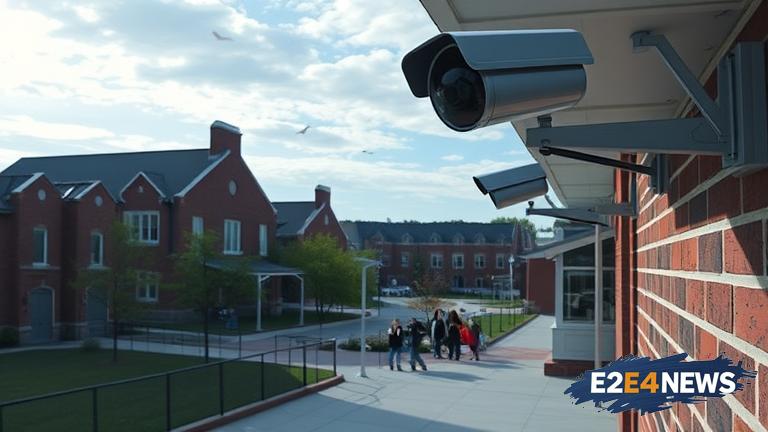The United States has seen a significant rise in the implementation of surveillance technology on university campuses, sparking debates about the balance between security and individual freedom. Many institutions have begun to adopt advanced monitoring systems, including facial recognition software, biometric scanners, and artificial intelligence-powered security cameras. These technologies are often marketed as a means to enhance campus safety and prevent crime, but critics argue that they pose a significant threat to student privacy and civil liberties. The use of surveillance technology on campuses has been linked to a broader trend of militarization and securitization of public spaces, with many universities partnering with private security firms and law enforcement agencies to develop and test new monitoring tools. This has led to concerns about the potential for mass surveillance and the erosion of trust between students and university administrators. Furthermore, the deployment of surveillance technology on campuses has been shown to disproportionately affect marginalized communities, including students of color and Muslim students, who may already feel vulnerable and targeted. The lack of transparency and accountability surrounding the use of surveillance technology on campuses has also been criticized, with many universities failing to provide clear guidelines or protocols for the collection and use of student data. In addition, the use of surveillance technology has been linked to a range of negative consequences, including increased anxiety and stress among students, as well as a chilling effect on free speech and academic freedom. Despite these concerns, many universities continue to invest in surveillance technology, often citing the need to enhance campus security and prevent violent incidents. However, critics argue that this approach is misguided and that it fails to address the root causes of violence and insecurity on campuses. Instead, they advocate for a more holistic approach to campus safety, one that prioritizes community engagement, social support, and restorative justice. The use of surveillance technology on campuses has also been linked to a broader trend of neoliberalization and privatization of public education, with many universities seeking to cut costs and increase efficiency through the use of technology. This has led to concerns about the commodification of student data and the exploitation of students as a source of revenue. Ultimately, the deployment of surveillance technology on US campuses raises important questions about the role of technology in society and the need for greater transparency, accountability, and regulation of the surveillance industry. As the use of surveillance technology continues to expand, it is essential that universities prioritize the rights and freedoms of their students and work to create a more just and equitable learning environment. The issue of surveillance technology on campuses is complex and multifaceted, and it will require a sustained and collective effort to address the concerns and challenges that it poses. By working together, students, faculty, and administrators can help to create a more secure and supportive campus environment, one that balances the need for safety with the need for freedom and autonomy.
